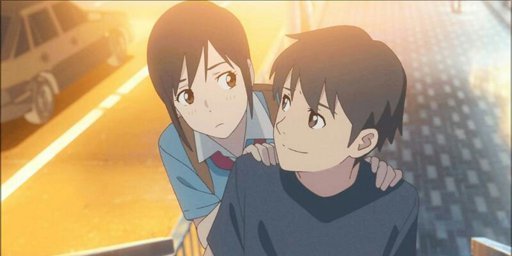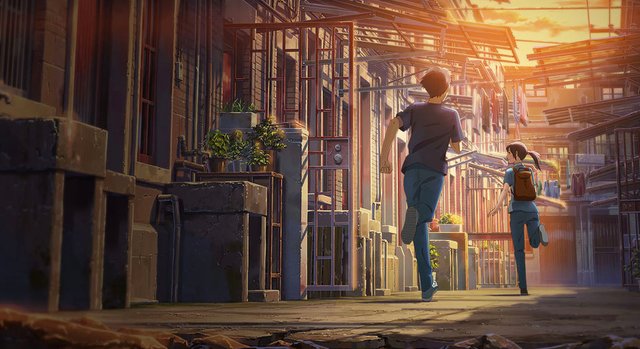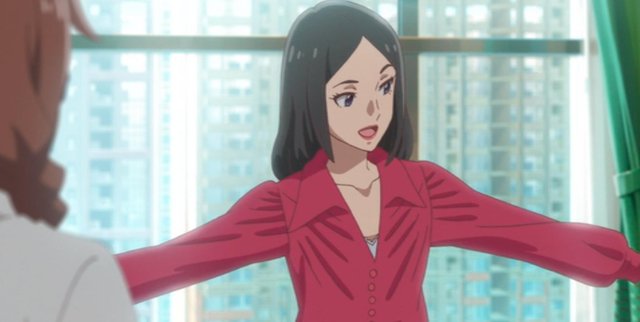SHIKI ORIORI - FILM REVIEW
Shiki Oriori is an anthology that is composed of three animated shorts, each made by a different director. And all are set in different cities of today's China.
This film is a Japanese-Chinese co-production between animation studios CoMix Wave Films (in charge of animating Your Name and several works by director Makoto Shinkai) and Haoliner Animation League.
Then I will talk more specifically about each of the short films that make up this anthology.
Rice noodles
In this first story we follow Xiao Ming. A young man who upon receiving the news that his grandmother is in poor health decides to return to his hometown to visit her. In his trip he will remember different moments of his life, in which the San Xian noodles were part of his daily life. This is because as a child Xiao Ming ate these noodles with his grandmother (apparently it is normal to eat these meals).
The premise is quite normal. It sounds a bit strange to say that a person remembers his life through a plate of noodles, but this element is quite well integrated. It is justified well through the events that happen on the screen.
The animation and the soundtrack are pretty good. Nothing revolutionary, but it is above the average anime.
On the other hand, I think that what benefits this story the least is its duration, which is only fifteen minutes. There are times when it goes too fast for us to really go through what is happening. And really the protagonist lacks nuances to become a character, is just an archetype. Which is understandable with the little time they have to develop it, but it does not stop playing against it.
It's not a great start to an anthology, but it's fine. Complies
A little fashion show
We continue with the second of the three stories. This time we follow Yin Lin, a model of about twenty-five to thirty years who is at a time in his career in which he must reinvent himself. She lives with her younger sister, Lu Lu, who is studying to be a fashion designer. Throughout history, the protagonist must find a balance between her life as a model and the relationship with her sister, or so it seems.
This is the worst of the three stories. Seeing her, I never understood what the focus of the story was. Since most of the time we see Yin Lin being surpassed by a younger model and wondering if there is still a space in the fashion world for her. And in the background is the sister, doing little and nothing. Until after eight minutes to complete the story it seems appropriate to put together a fight between the sisters because: "Yin does not value Lu Lu's skills as a designer", something that comes out of nowhere and could also be solved with a talk since both are adults.
This story lasts half an hour. Half an hour in which little and nothing really happens. The characters are uninteresting, the script decisions are very questionable and, considering that it is a story that revolves around the world of fashion, the little attention they give to the costumes and the little visual flight that is in the scene is very sad story.
Bad, he doesn't know what he wants to tell and he doesn't take advantage of any of the elements in the script.

source
Love in Shanghai
Last of the three stories. Li Mo is a young architecture student who has just moved near the residential neighborhood where he lived when he was a child. Checking the moving things, Pan, his childhood friend, finds a cassette in one of the boxes. Xiao, his childhood sweetheart, had sent it to him more than ten years ago. Upon meeting this, Li Mo decides to go to his old house to look for the recorder in which he played the tapes. When he hears it, he begins to remember how they took different paths and eventually stopped seeing each other.
This is a pretty classic story. It has no very innovative element, but its execution is the best of the three. Solid characters, palpable motivations and a well structured story that handles a certain subtlety, never resorting to the low blow when it comes to showing us how the characters got to be where they are.
Its duration is very well used. Squeeze every second you have to tell a story with purpose, beautiful and close. It is everything that the previous short could aspire to be.
They did well to finish with the best story, quite relieves the bad drink of the second. I guess I recommend it, especially for the last short. A good way to look at the anthology would be to skip the second of these three stories completely.


